Latin name: Zephyranthes
Category: bulbous herbaceous plants
Origin: South Africa and tropical America
Briefly about the distribution and origin of zephyranthes
Zephyranthes (Zephyranthes) - small-bulbous herbaceous perennial, loved by flower growers and widely distributed in cultural cultivation. The zephyranthes plant is unusually attractive and, most importantly, absolutely not capricious.
And a zephyranthes flower appeared from the tropics and subtropics of the Center, North and South America and the Caribbean islands. This genus, which covers nearly 100 species of monocotyledonous bulbous flowering plants, has been defined in the Amaryllis family (Amaryllidaceae).
Its name comes from the words of Greek origin "zephyr" - western wind and "anthos" - flower. It is also called an upstart - a flower. This exotic blooms unusually. In their homeland, during the rainy season, zephyranthes appear, jumping out of the ground. Plants grow instantly and bloom within a few days. They open their beautiful flowers and present their original petals to the breath of fresh western winds. Different nationalities call the upstart flower in their own way: rain lily, fairy lily, rain flower.
Zephyranthes rain lily has close relatives - among them are bulbous houseplants: eucharis, clivia, krinum, hypeastrum.
Various types of zephyranthes
Zephyranthes white (Zephyranthes candida)
Zephyranthes white is a big lover of heat. It is during the period of bright sunshine from July to October that you can admire its beautiful flowering. Peduncle 20 cm high presents a white funnel-shaped flower up to 6 cm in diameter with white or purple perianths. Dark green, tubular leaves are similar to onion leaves. Their length is up to 30 cm, and their width is up to 0.5 cm.
Golden zephyranthes (Zephyranthes aurea), aka yellow zephyranthes
The herbaceous perennial golden zephyranthes looks original when flowering in the winter months of January and December. A small plant with linear thirty-centimeter leaves will perfectly decorate any interior. Gorgeous yellow funnel-shaped flowers give the plant beauty and originality. It is important that the golden zephyranthes prefers coolness and can be cultivated in open soil in areas with a warm climate.
Zephyranthes robusta or powerful zephyranthes
Very colorful ornamental flowering houseplant. Widely known under the name "home daffodil". This beauty is native to Argentina and Brazil. And in European regions it became famous since the distant 1828.
The decoration of the plant are flowers of light pink color. Green stems - leaves grow up to 30 cm long.
Zephyranthes pink (Zephyranthes rosea)
Another representative of the exotic flora of tropical America, zephyranthes is pink. He was very fond of amateur flower growers. Zephyranthes pink is often referred to as the "upstart flower." Fast growing and flowering plant up to 30 cm tall. The leaves of the pink zephyranthes are dark green, shiny, narrow and linear. In the spring-summer period, very delicate pale pink flowers appear with a diameter of up to five centimeters.
Zephyranthes grandiflora
The native habitats of the large-flowered zephyranthes are the Antilles and Guatemala.
This type of zephyranthes is considered as the most common in cultural use, by the way, since the distant nineteenth century. Herbaceous perennial with small ovoid bulbs up to 3 cm. From a short neck, an original bunch of dark green color almost up to half a meter long narrow, flat, fleshy leaves appear. In early spring, long stiff flower stalks rise very quickly above them. Their decoration is ten centimeter, funnel-shaped flowers of bright pink color, in unique harmony with the juicy greenery of the leaves.
Zephyranthes grandiflora is a very fast growing plant. Only scindapsus is ahead of it in growth rate, the shoots of which grow up to one meter long in a year.
Zephyranthes home care
Growing zephyranthes in indoor cultural conditions is completely simple. After all, the plant is absolutely unpretentious and does not impose special requirements on its content. But still there are certain rules that must be followed and the upstart flower will delight with its delicate beauty and charming attractiveness.
Location and lighting
Zephyranthes care for him is determined by the right choice of location. The plant likes a bright area of \u200b\u200bresidence and the bright light of direct sunlight in the morning. Sometimes they ask: why does the zephyranthes not bloom? The problem is the lack of lighting. For high-quality plant maintenance, southern, eastern and western window sills are suitable. With the onset of warming, the best place for a plant to stay is a balcony or loggia.
Temperature regime
The upstart flower does not require special care. It is simply necessary to keep the temperature in summer not exceeding 29˚С, and in winter, when the plant is resting, a temperature around 12˚С is desirable.
Watering and environmental humidity
Zephyranthes should be watered as the topsoil dries. The water is warm and settled. For a plant that has faded, watering is reduced. In winter, water less often so that the bulbs do not rot and the plant does not shed its leaves.
Zephyranthes transplant, top dressing and suitable soil
Zephyranthes should be planted correctly. Every year, after a period of rest, bulb plants are planted in a low and wide pot, the tops should be visible on the surface. It is advisable to plant several plants.
Zephyranthes are fertilized in the summer months with an interval of 14 days.
In winter, the plant is not fed.
The soil is desirable fertile and loose. The mixture may consist of humus, sod, sand or perlite, add a little lime.
Reproduction of zephyranthes
Like all indoor bulbous plants, zephyranthes are propagated by bulbs - children and less often by seeds.
During the dormant period and before it, small onions are separated from the mother and planted in separate small pots. As the capacity grows, increase. The beauty of flowering can be seen in the second or third year.
Pests and diseases
Damage can occur with scale insects, aphids, spider mites and amaryllis scale insects. When uninvited guests appear, you must immediately fight them. First, wash the plant with a solution of soap. If this procedure is powerless, then it is necessary to move on to more drastic measures. We use chemical preparations: actellik, insecticide, decis, karbofos.
Problems that may arise when growing
Zephyranthes can add brightness and color to a garden or balcony. However, when growing zephyranthes, there may be some difficulties that should be considered.
- Sensitivity to cold. Zephyranthes does not tolerate low temperatures, especially during flowering. If the temperature drops below 10 degrees Celsius, the flowers may fall off or look wilted.
- Lack of sunlight. Zephyranthes needs bright but not direct sunlight for good growth and flowering. Lack of light can lead to stunted growth and lack of flowering.
- Lack of moisture. Zephyranthes needs moderate watering, especially during the flowering period. If the ground is too dry, the flowers may drop or look wilted.
- Oversaturation with water. On the other hand, Zephyranthes do not tolerate excessive amounts of water. If the soil is too wet, the roots may rot and the plant may die.
- Diseases and pests. Zephyranthes can be attacked by pests such as mealybugs or spider mites. They can also be susceptible to various diseases such as root rot or bacterial infections.
- Transfer. Zephyranthes dislike transplanting and can be stressed by it. It is necessary to transplant the plant only when necessary and with caution.
- Nutrients. Zephyranthes need good soil and fertilizer for good growth and flowering. Nutrient deficiencies can lead to slow growth and poor flowering.
Overall, Zephyranthes is a fairly easy plant to grow, provided the right conditions are provided.
Features and uses of the plant
Why can't you keep an upstart flower at home? And this question can be discussed with feng shui specialists and florists. The teachings of the ancient Chinese are negative about flowers that have needle-shaped and pointed leaves. Love for life and the desire to jump up is positively assessed by the teachings of Feng Shui. The energy of the flower is positive for men. If desired, zephyranthes can be placed in an office or living room. This decision must be made by the amateur grower himself, whether to keep a homemade daffodil in his house or not. But you should always remember that zephyranthes are poisonous.
Despite the toxicity of the plant, its bulbs are used in traditional medicine for liver diseases, abscesses.
Caring for indoor bulbous plants is absolutely simple and these specific rules of conscientious maintenance were considered on the representative of the bulbous - zephyranthes. Treat your pet with love and attention, take care and be healthy.




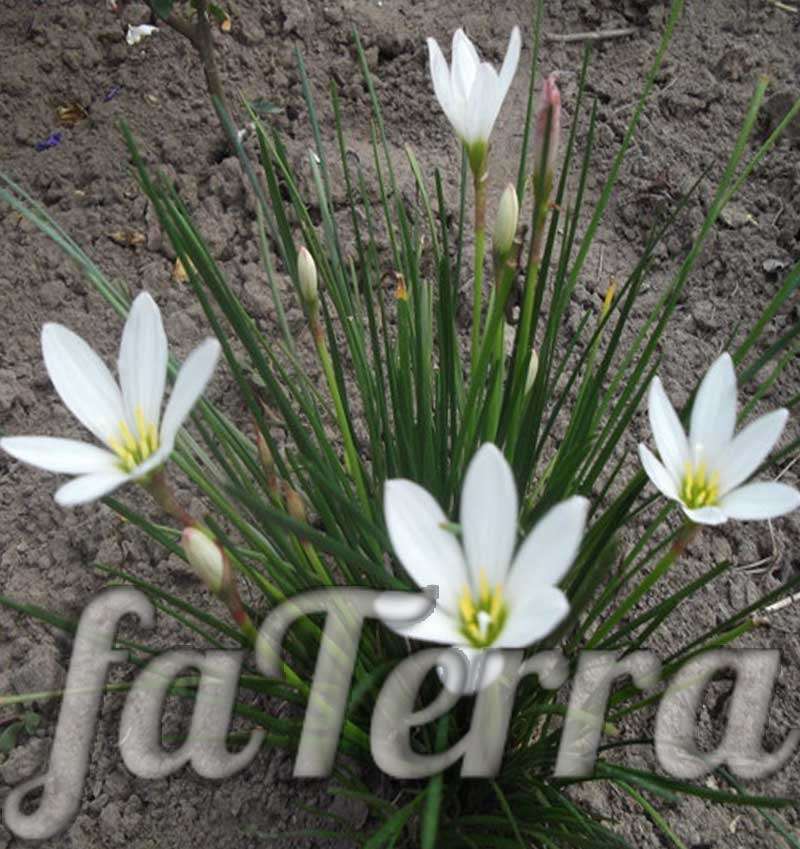










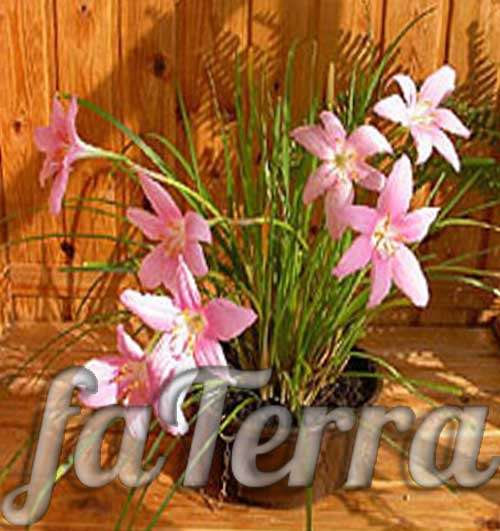
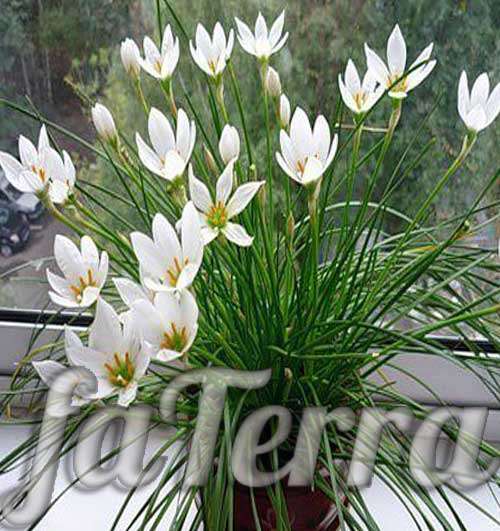
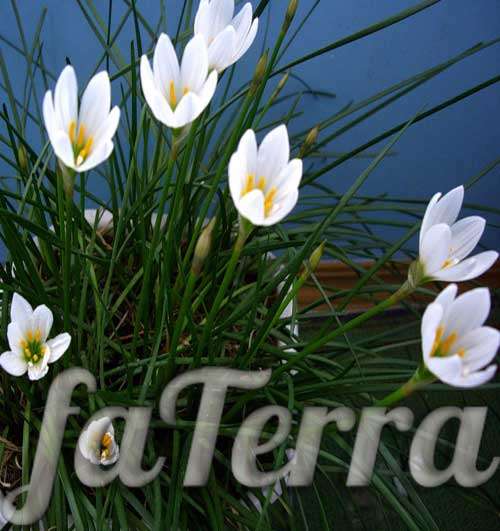
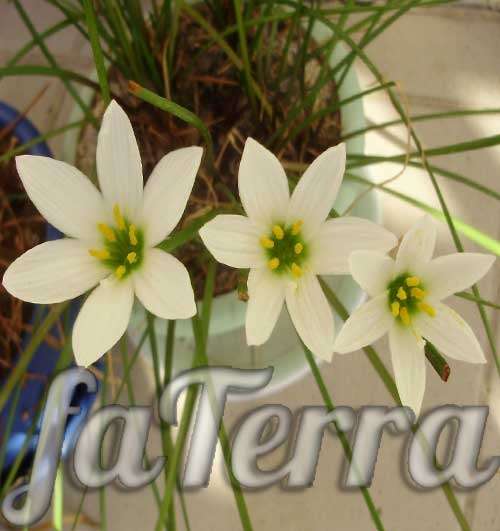
Write comments
Comments